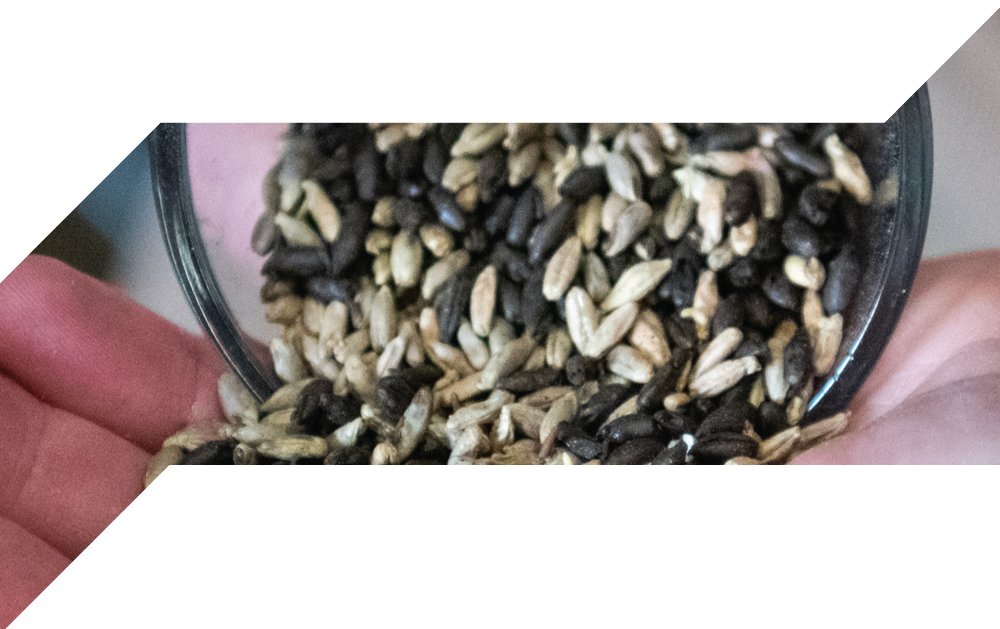


A Beverage for the Ages
By Rebecca Calappi | Photography by Mike Ferdinande
Science has given humankind many innovations: space travel; medicine; electricity; beer; the list is huge.
Yes, beer, can hold its own against other scientific giants. If not for microbiology, physics or chemistry, we couldn’t have “a cold one” with friends on a summer afternoon. Or the classic burger and a brew. the beer world owes a lot to science. “You can do as little or as much science as you want,” said Cordell DeMattei, Ph.D., director of Fermentation Science at Central Michigan University. “You can take the science as far as you want.”
Th Building Blocks Beer is four things: water, malt, hops and yeast. How those ingredients react together at certain temperatures is what gives beer flavor.
“By volume, the biggest ingredient is water and its chemical profile, pH balance and mineral content have a huge impact on the beer’s flavor,” explained Ray Sherwood, owner and head brewer at Sherwood Brewing Company. “Beer is such a balanced food that all ingredients should have an equal impact.” Malt is typically barley that was specially prepared for brewing.
“Malt is where science meets art. there’s a rainbow of different malts,” said DeMattei. “You combine different malts for sweetness and flavor and add hops for the bitterness. there’s a range of hops out now. It’s a balance of the science we know with the art of knowing what goes together.”
Next, Hops
“Hops is probably the most interesting ingredient,” said Sherwood. “It grows on vines vertically and produces little cones or flowers with an abundance of oils and those oils are what we’re after. they’re very volatile, so we can get a lot of flavors. When we boil the hops, depending for how long, determines the beer’s flavor.”
And last, but not least, yeast, the stuff that makes beer, well, beer.
“You might have one yeast grain that gives off a fruity flavor, as opposed to another yeast that has a cleaner taste or gives it added flavor,” explained Tim Porter, head brewer at Blue Skies Brewery. “We’re growing our own liquid yeast starters per batch. Yeast selection is a major factor in our science. Consistency is virtually impossible just because there’s so many different selections. Do your best, keep as many notes as you can, monitor and check as you’re going through the process.”
Beer Brewing Basics
In its simplest form, brewing beer includes heating water and grains together. Taking the grains out and adding malt. Next, hops go in the pot. Brewers call this concoction wort. Cool the wort and add yeast. But it’s not beer yet! The wort ferments turns into beer and gets bottled.
“There’s a lot of organic chemistry and microbiology that goes into it. The pH scale we use today was developed by a brewery. They had a whole laboratory at Carlsberg Laboratories. It shows how deeply scientific beer can be,” said Sherwood.
According to Porter, choosing when to add ingredients changes the taste of the recipe.
“A lot of factors go into how a beer tastes. At the beginning of a recipe, it’s the malt selection,” said Porter. “Where you put the hops and how much you use also makes a difference. It’s like having a palette of colors. Brewers make wort—it’s not beer until it’s fermented with yeast, so yeast makes beer.”
As you can see, beer truly is the result of thousands of years of science, discovery and exploration. Who would have guessed that when beer was discovered in ancient Babylon, it would be such a part of civilization today? Whatever beer brings you to belly up, thank a brewer who decided microbiology, chemistry and physics sounded fun to learn. Then, sip your cold one appreciatively.